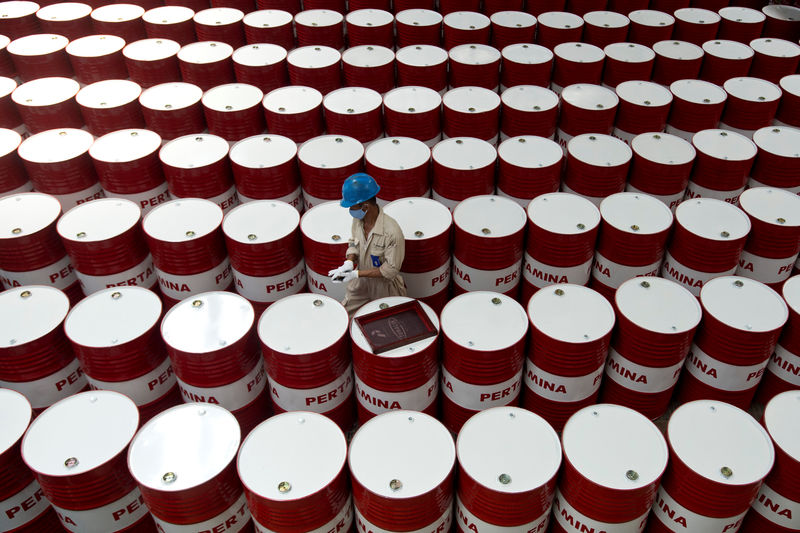 © Reuters. A worker prepares to label barrels of lubricant oil at the state oil company Pertamina’s lubricant production facility in Cilacap, Central Java
© Reuters. A worker prepares to label barrels of lubricant oil at the state oil company Pertamina’s lubricant production facility in Cilacap, Central JavaBy Henning Gloystein
SINGAPORE (Reuters) – Oil prices dipped on Wednesday, as refined product inventories in the United States rose in what the market interpreted as a sign of lackluster demand.
U.S. West Texas Intermediate (WTI) crude futures were at $57.37 a barrel at 0132 GMT, down 25 cents, or 0.4 percent, from their last settlement.
Brent crude futures (), the international benchmark for oil prices, were down 24 cents, or 0.4 percent, at $62.62 a barrel.
Traders said the lower prices came after a report by the American Petroleum Institute (AI) late on Tuesday that showed a 9.2 million barrel rise in gasoline stocks in the week to Dec. 1, and an increase of 4.3 million barrels in inventories of distillates, which include diesel and .
The perception that the higher fuel stocks pointed to weak demand outweighed the fact that crude inventories fell by 5.5 million barrels, to 451.8 million, traders said.
Outside the United States, analysts said that a supply cut led by the Organization of the Petroleum Exporting Countries (OPEC) and Russia, which is expected to last throughout 2018, has helped Brent prices rise by over 40 percent since June, and by more than 130 percent since January 2016, when they hit their lowest level since 2003.
With the supply cuts likely in place throughout 2018, analysts said crude prices were well supported.
“Robust global demand and tight supplies should see Brent crude oil rise to $70 per barrel by mid-year (2018),” said Bank of America Merrill Lynch (NYSE:) in its 2018 outlook.
One factor that could undermine OPEC’s and Russia’s effort to cut supplies and prop up prices is U.S. oil production
“U.S. shale producers continue to win market share,” said Fawad Razaqzada, analyst at futures brokerage Forex.com.
Fusion Media or anyone involved with Fusion Media will not accept any liability for loss or damage as a result of reliance on the information including data, quotes, charts and buy/sell signals contained within this website. Please be fully informed regarding the risks and costs associated with trading the financial markets, it is one of the riskiest investment forms possible.
Source: Investing.com




























